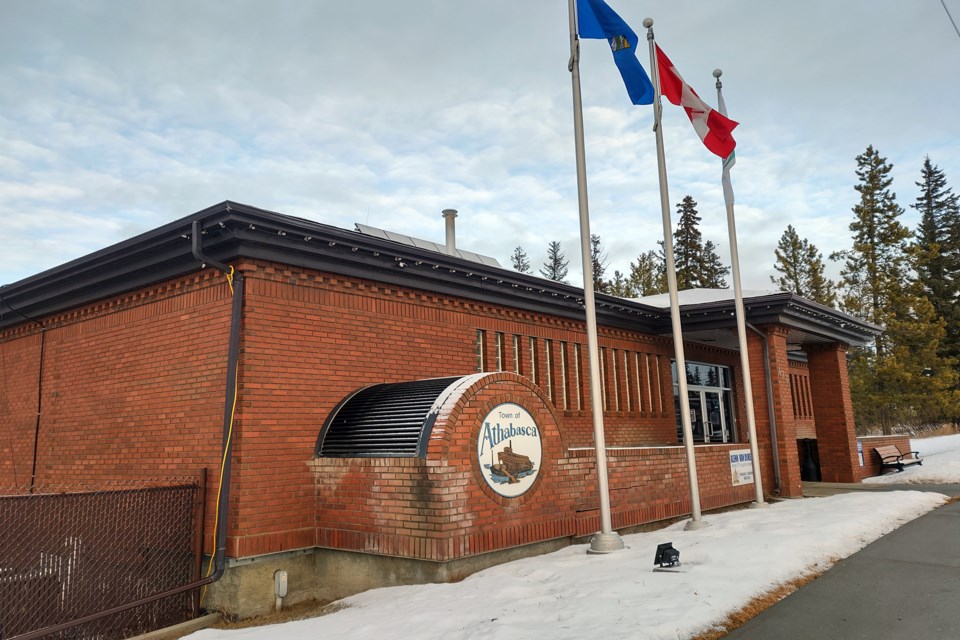ATHABASCA – The Town of Athabasca will pay an additional $271,500 for water from the Aspen Regional Water Services Commission this year after the commission recently passed its 2022 budget which included a 30 per cent increase to the price it charges to its three members for water.
Athabasca town council got its first look at the 2022 utility bylaw (Bylaw 001-2022) and waste management bylaw (Bylaw 002-2022) at its Jan. 18 regular meeting, both of which will see rather dramatic increases to the rates the town charges to residents for those services.
Council passed the first readings of both bylaws just to get them on the table, but there will be further discussion before the next two required readings are passed to make it official, said mayor Rob Balay later afterwards.
“The reason we wanted to get the first reading on there and now it allows us to debate in second and third reading,” he said. “If we waited until March or April to do this that would mean it's that much harder on our 2022 budget.
“We probably won't pass the third reading until we have our community open house presentation of the budget ... I want to have that first, so that we can hear back hear back from the ratepayers.”
For clarity, ARWSC is made up of the three Athabasca area municipalities — Town of Athabasca, Athabasca County and Village of Boyle. Town Coun. Dave Pacholok chairs the commission while Boyle mayor Colin Derko sits as vice-chair. The commission oversees the gathering, treatment and distribution of water from the Athabasca River to points throughout the town, then south to Colinton, east to Boyle and north to Grassland and Wandering River. The three municipalities purchase water from the commission at a bulk rate, then bill users based on their consumption.
The quarter-million dollar jump in the price of water is based on an expected consumption of 401,500 m3 for the year — about 63 per cent of the total usage between the three municipalities, which is the percentage arrived at when last year’s water intake project took a $2-million jump and the town had to borrow $1.3 million to cover its portion of the increase. The village uses about 20 per cent, while county residents connected to the regional waterline account for 17 per cent of the usage.
The proposed rates for water going forward will see the minimum charge per billing set at $23.81, up from $19.52. Additional usage over five cubes will be charged at $4.763/m3 for 18 m3 or less (up from $3.904); up to 45 m3 will be charged at $4.902 (up from $4.081); above that, users will be charged at $5.397/m3 (up from $4.242/m3).
Sewer rates will also rise from 34.75 per cent of water consumption, to 36 per cent. There hasn’t been an increase in sewer rates since 2017.
Balay said he expects feedback from residents but hopes to be able to break it down to show the proposed increase per month, which should come as less of a shock.
In November, Pacholok told council to expect a sharp rise in water rates after going over the capital wish list for the commission. The commission’s reserves were depleted to help pay for the water intake project.
“I think this will indicate that when we pass the budget there will be an increase — a considerable increase — in water rates, because we have no monies going forward,” he said at the Nov. 11 council meeting. “We decided that we must start another big capital reserve in order to alleviate these issues coming down the road, so we may get considerable feedback on this, but we are going to raise the rates and that will have to be considered in budgets,” he said.
Residents can also expect an increase to their fees for waste management, but not nearly as drastic.
“The user fees with respect to the pick-up and disposal of refuse for dwelling units per garbage cart shall be $31.51/month/dwelling unit or $63.02 per billing,” states proposed Bylaw 002-2022.
Recycling rates will also be on the rise to $3.88/month/dwelling unit or $7.76 per billing for the recycling initiative. Curbside recycling services will be charged at $7.76/month/dwelling unit or $15.52 per billing.
After recalculating the formula per member of the Athabasca Regional Waste Management Services Commission last year, rates for all members, aside from Athabasca County, will likely be going up, said Balay.
Town council has had several meetings regarding the upcoming budget and Balay said he expects there will be an increase in property taxes, not only because of water rates, but also the cost of RCMP and inflation in general.
“We're going to try and keep it as absolutely low as possible. I've seen what some other communities have done, and they're at around three per cent. I hope to be less than that,” he said, adding it may be even lower for the business community, but the numbers are still very tentative, with a lot of work still to be done with the budget before it is finalized.
“I would say that since I’ve been on council, this budget has been the biggest challenge.”



